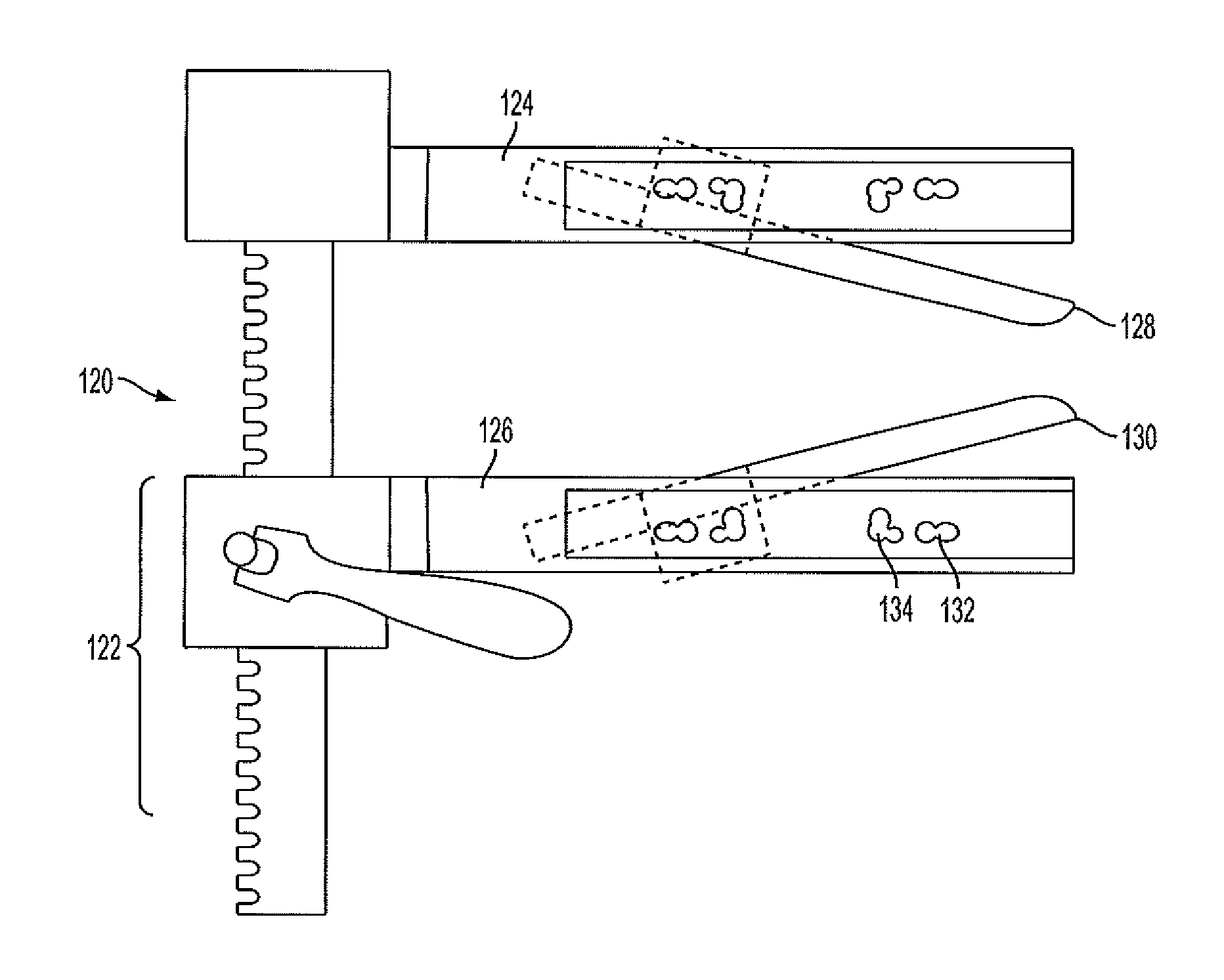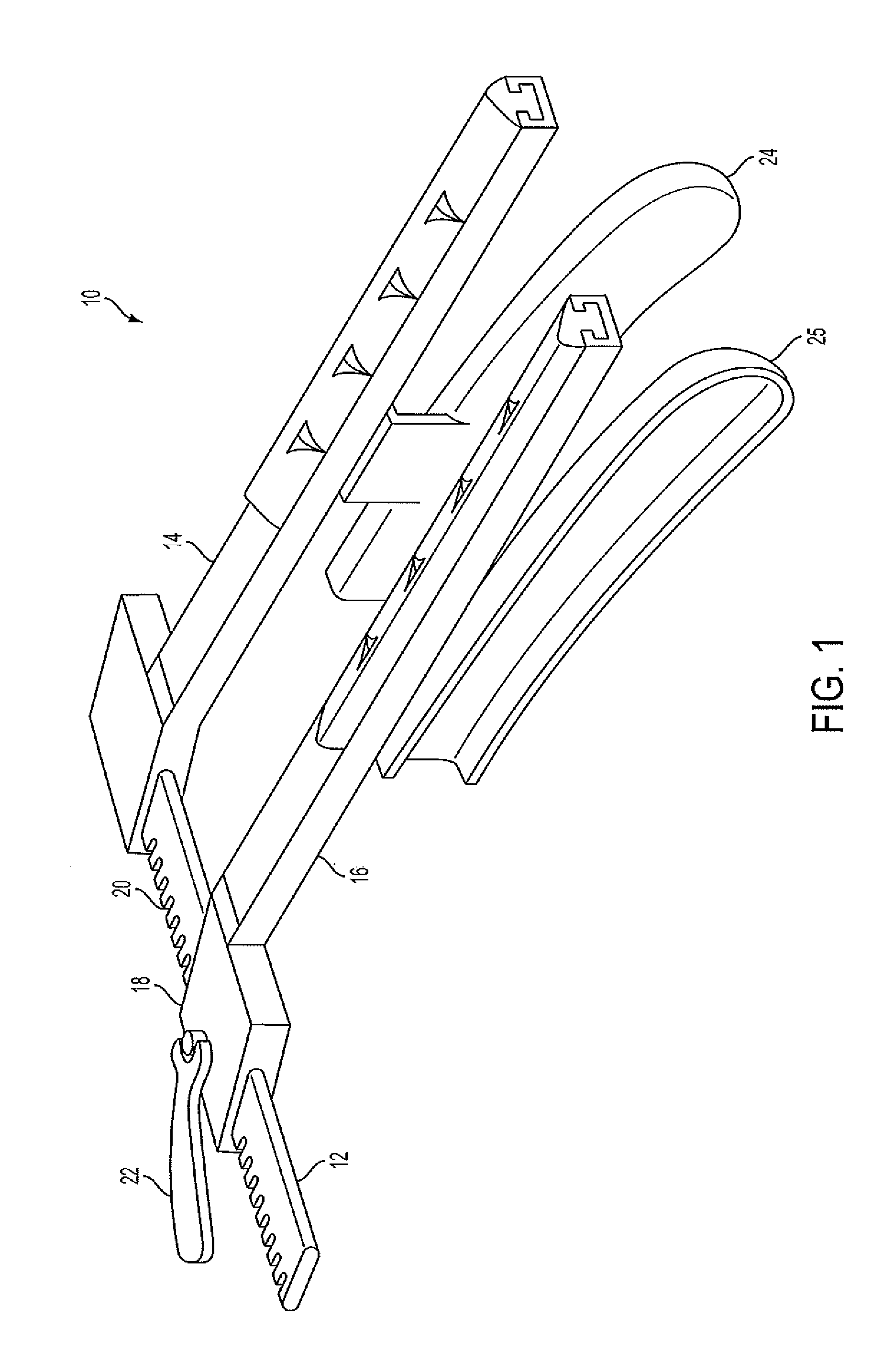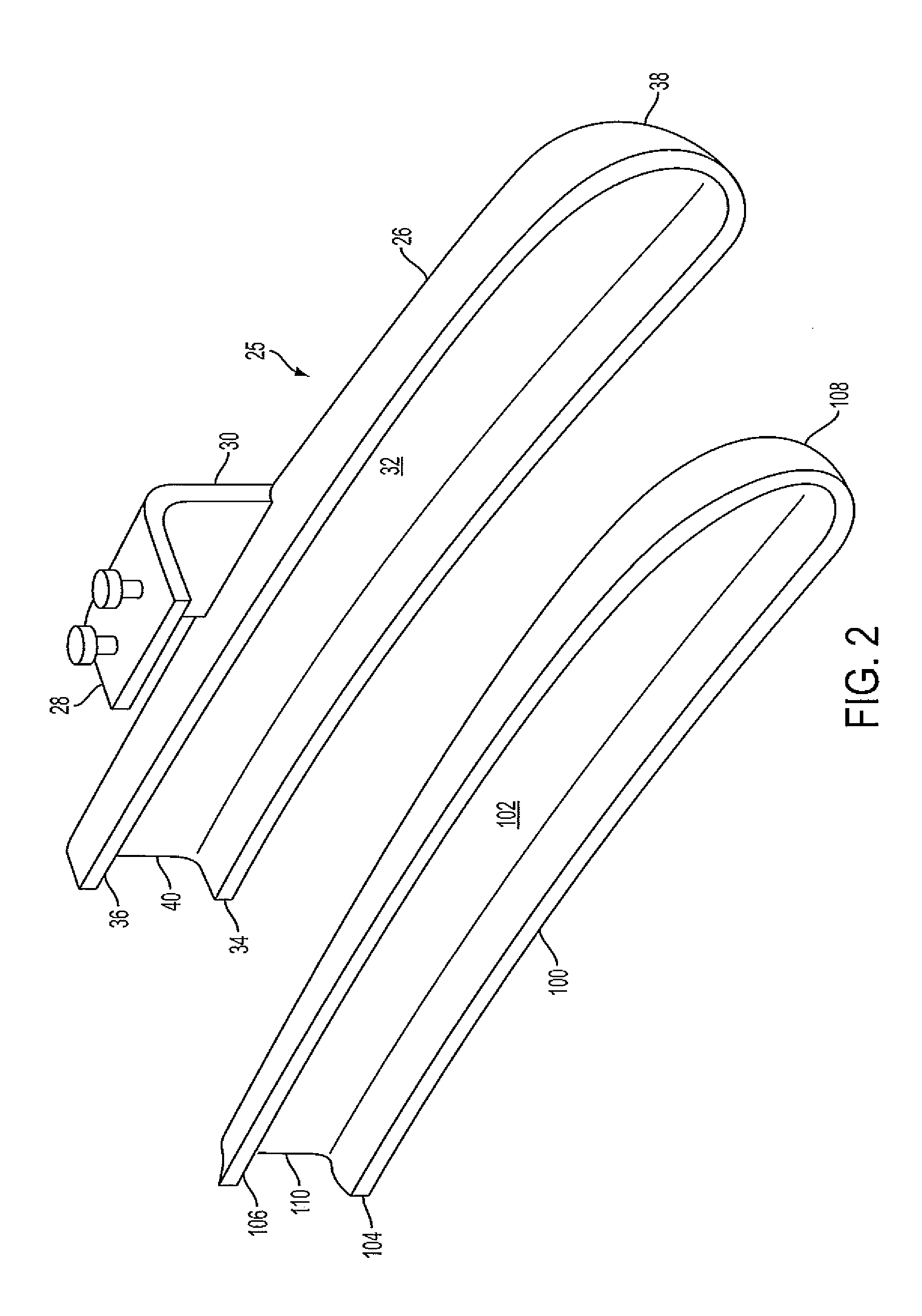Sternal Retractor
a retractor and sternum technology, applied in the field of medical devices, can solve the problems of waste of all other blood components, inability to perform most cases, and inability to achieve the effect of reducing bleeding and reducing sternal breakag
- Summary
- Abstract
- Description
- Claims
- Application Information
AI Technical Summary
Benefits of technology
Problems solved by technology
Method used
Image
Examples
Embodiment Construction
[0026]A typical sternal retractor has arms that attach to a rack, wherein one of the arms is fixed and the other is movable via a rack and pinion mechanism. Each arm carries a blade and the blades have sternal engaging surfaces facing away from each other. During a surgical procedure performed via a sternotomy, after the sternum is cut, the blades are inserted into the cut opening so that they rest against the sternal edges. The rack and pinion is engaged, causing the blades to move away from each other and causing the sternal edges to move away from each other. This is continued until a sternal opening is created that is large enough for the surgeon to access the inside of the chest.
[0027]The present invention is a sternal retractor that reduces bleeding from the cut edges of the sternum. The present invention also is a sternal retractor that reduces breakage or fracture of the sternum.
[0028]Note that while the present invention is described as relating to asternal retractor having...
PUM
 Login to View More
Login to View More Abstract
Description
Claims
Application Information
 Login to View More
Login to View More - R&D
- Intellectual Property
- Life Sciences
- Materials
- Tech Scout
- Unparalleled Data Quality
- Higher Quality Content
- 60% Fewer Hallucinations
Browse by: Latest US Patents, China's latest patents, Technical Efficacy Thesaurus, Application Domain, Technology Topic, Popular Technical Reports.
© 2025 PatSnap. All rights reserved.Legal|Privacy policy|Modern Slavery Act Transparency Statement|Sitemap|About US| Contact US: help@patsnap.com



